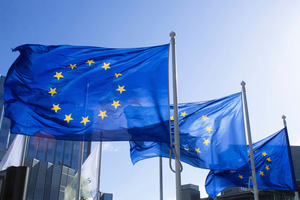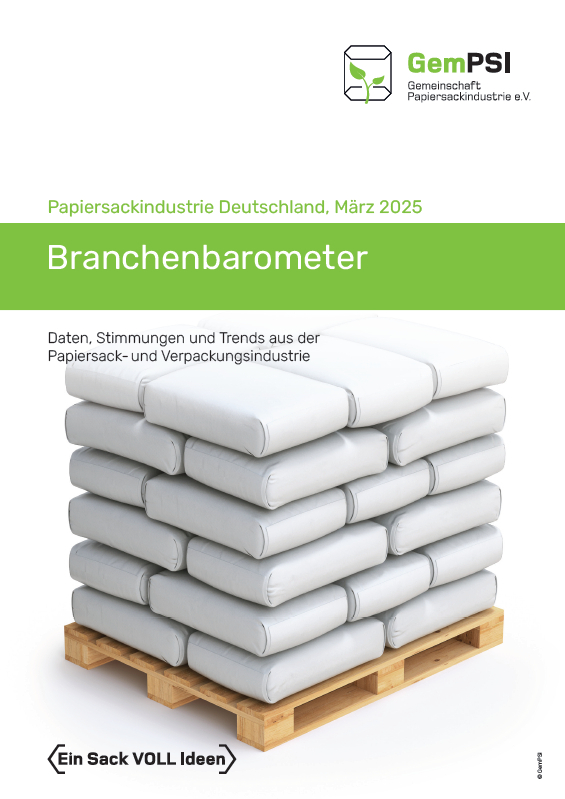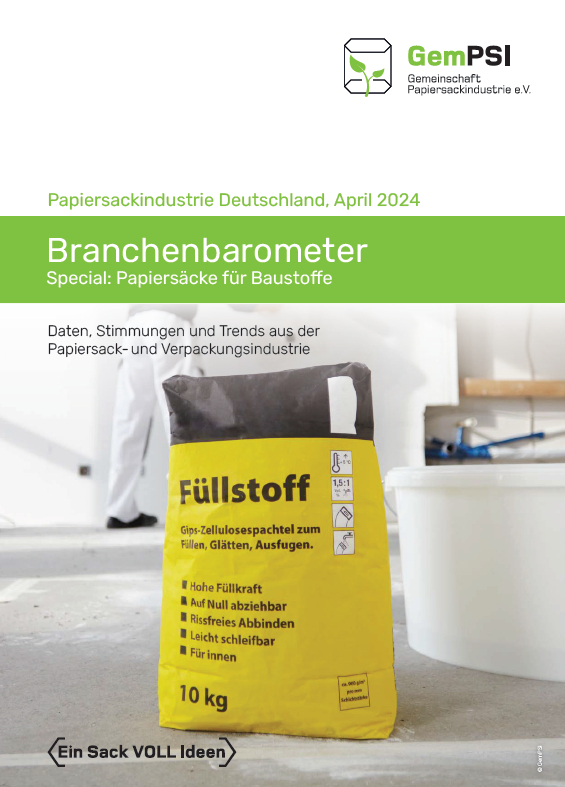German paper sack industry sets the course for new EU regulations
Packaging is at the heart of European sustainability strategies—and that includes paper bags. Current and upcoming EU regulations are significantly increasing the requirements for packaging. In particular, the EU Packaging Regulation (PPWR) and the EU Deforestation Regulation (EUDR) are affecting the German paper bag industry – from recyclability and recycled content to corporate due diligence. The members of the Paper Bag Industry Association (Gemeinschaft Papiersackindustrie e.V., GemPSI) are preparing intensively for the implementation of the new regulatory requirements.
Packaging is at the heart of Europe’s sustainability strategies – and that includes paper sacks. With current and upcoming EU regulations, the requirements for packaging are increasing significantly. In particular, the EU Packaging and Packaging Waste Regulation (PPWR) and the EU Deforestation Regulation (EUDR) are having a direct impact on the German paper sack industry – from recyclability and recycled content to corporate due diligence. The members of the German Paper Sack Industry Association (GemPSI) are actively preparing for the implementation of these new regulatory requirements.
“There is currently a great deal of uncertainty, as some secondary legislation is still pending and the practical implementation leaves room for interpretation in some areas,” explains GemPSI Managing Director Karsten Hunger. “To ensure that customers of the German paper sack industry continue to receive packaging that complies with the law in the future, we are monitoring the legislation very closely.” GemPSI members are currently taking stock of whether their current product range complies with the requirements. At the same time, they are continuously working to optimize their packaging and processes for future requirements, where necessary.
EUDR to replace EUTR from the end of 2025
In June 2023, the EUDR came into force as part of the EU Green Deal to combat global deforestation and forest degradation. It replaces the previous EU Timber Regulation (EUTR) and covers various product groups, such as coffee, cocoa, palm oil, and wood, as well as products made from them. Products made from waste paper are excluded. Originally, implementation was planned for December 30, 2024, but was postponed due to technical problems. For the timber supply chain, which also includes paper sacks, December 30, 2025, is now the new deadline.
Increasing supply chain and data management
From this date onwards, paper sack manufacturers are obliged to introduce a due diligence system. This comprises two key elements. Firstly, the documentation of relevant supplier data. This includes obtaining proof of EUDR compliance for the paper they purchase and use. They can obtain this from importers or paper manufacturers. These are required to record geolocation data from areas of origin, assign reference and verification numbers, and carry out a risk description and assessment. Secondly, the submission of a digital due diligence statement (DDS) via the central EU platform TRACES NT (TRAde Control and Expert System – New Technology), in which all information is documented and made available to control authorities. Here, each item is given a unique reference number that is linked to the reference numbers of the upstream suppliers. Small and medium-sized enterprises are exempt from the digital declaration requirement and from risk description and assessment. Important to note: Wood harvested and placed on the market before December 30, 2025, and all products made from it, will continue to be subject to the EUTR (1).
Customers do not need proof
“Paper sack customers can assume that all paper sacks will be EUDR-compliant as soon as it becomes necessary,” says Hunger. “To ensure this, GemPSI members work very closely with their suppliers.” Before the deadline, it is neither necessary nor legally possible to confirm EUDR compliance. Furthermore, there is no obligation to pass on data or guarantee statements to filling companies. This means that customers of German paper sack manufacturers do not need proof. They can rest assured that all paper sacks placed on the market are EUDR-compliant. The exclusion of non-marketable paper sacks is already covered in most terms and conditions.
Comprehensive changes through PPWR
The PPWR is a regulatory requirement that affects all packaging in Europe. It replaces the previous Packaging Directive and is intended to ensure a uniform legal framework throughout the EU. Its goal is to reduce packaging waste and promote sustainable packaging. The PPWR came into force on February 11, 2025, and will be applied with a transition period starting on August 12, 2026. Regulations for which a specific date has been set are excluded. The paper sack industry is affected in many ways – from the composition of the packaging to recyclability and labelling requirements. “However, there are still many questions regarding the exact implementation,” explains Hunger. “Everything is still in flux.”
Stricter requirements for ingredients and plastic content
From August 12, 2026, paper sacks that come into contact with food may no longer be placed on the market if they contain perfluorinated or polyfluorinated alkyl substances (PFAS) above a certain limit. However, compliance with these limits cannot currently be verified due to a lack of analysis methods. Uniform labelling of packaging throughout Europe will be mandatory from August 12, 2028. The labelling must be applied to both the paper sack and the disposal containers. The specific design is also still to be determined. A transition period is planned for unlabeled packaging. In addition, plastic films used as a barrier layer in paper sacks must contain a minimum of 35% post-consumer recycled material (PCR) from 2030. For paper sacks that come into contact with food, a minimum content of 10% post-consumer recycled material (PCR) is generally required. However, this requirement only applies if there is no risk to food safety and the requirements of Regulation (EC) No. 1935/2004 can be met. If the film accounts for less than 5% of the paper sack, this minimum proportion does not apply. This may be the case, for example, with plastic coatings. High-performance films with the minimum proportion of PCR are already available today.
Recyclability determines market access
In addition to the use of recycled materials, recycling is a very high priority within the PPWR. From 2030, all packaging must be recyclable. To this end, the EU has set minimum requirements, which are divided into performance levels (recyclability scores). Packaging with a score below 70% is considered non-recyclable and must be removed from the market. From 2038, a minimum recyclability of 80% must be achieved. The exact regulations for determining recyclability are still being developed. Therefore, no reliable statements can be made at this time. According to the recycling method for fiber-based packaging developed by Cepi and 4evergreen (2), most paper sacks on the market today are already suitable for 2030 (3). Starting in 2035, it must also be proven that paper sacks are recycled on a large scale. GemPSI created the REPASACK recycling system 35 years ago. “In Europe, the system is seen as a best practice example,” says Sven Korsten, Managing Director of Interzero REPASACK. “We use our expertise to support the establishment of similar take-back systems in Europe.” The REPASACK group of companies already offers paper sack manufacturers and their customers recyclability testing and packaging optimization services, and provides support on environmental compliance issues in all EU countries as well as in the UK, Norway, and Switzerland.
GemPSI focuses on dialogue and transparency
“The EUDR and PPWR entail a significantly higher administrative burden for paper sack manufacturers,” says Hunger. “To avoid exacerbating this situation, we ask customers of the German paper sack industry to talk to their suppliers directly instead of sending them lists of demands. This will allow us to jointly clarify whether and where any need for corrective action exists.” GemPSI members are well versed in the subject and are available to answer any questions. In addition to webinars, the association provides its members and their customers with regularly updated information letters on both regulations. “Our members will be able to offer their customers high-performance, legally compliant paper sack solutions even under the new requirements,” Hunger is convinced.








